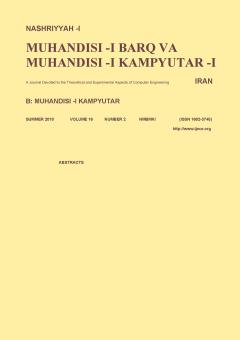-
-
List of Articles
-
Open Access Article
1 - Handover Management between Femtocell and Macrocell Using Geo-Based Spectral Clustering
T. Bahraini M. Zamiri H. Sadoghi Yazdi -
Open Access Article
2 - How to Identify Requirements under Uncertainty for Self-Adaptive Software Systems Development
R. Moeinfar Ahmad Abdollahzadeh Barforoush S. M. Hashemi -
Open Access Article
3 - Geometrical Self-Organizing Map Classifier Based on Active Learning for Steganalysis in the Video Environment by Spending at Least a Label
H. Sadoghi Yazdi A. Mohiaddini M. Khademi -
Open Access Article
4 - An Efficient Hybrid Routing Protocol in Underwater Wireless Sensor Networks
J. Tavakoli N. Moghim -
Open Access Article
5 - The Effect of Topic Pattern of Teen Users’ Search Behavior on Query Recommendation
H. Ghasemzadeh Mohammad Ghasemzadeh A. Zareh -
Open Access Article
6 - Adaptive Educational Hypermedia Web Pages Recommending Based on Learning Automata and User Feedback for Resource-Based Learning
Mohammad Tahmasebi Faranak Fotouhi-Dgazvini M. Esmaeili -
Open Access Article
7 - A New BGP-based Load Distribution Approach in Geographically Distributed Data Centers
A. Esmaeili B. Bakhshi -
Open Access Article
8 - A New EPC-C1G2 Based Anti-Collision Algorithm to Address Tags’ Starvation in RFID Systems
A. Abbasian M. Safkhani
-
The rights to this website are owned by the Raimag Press Management System.
Copyright © 2017-2025







